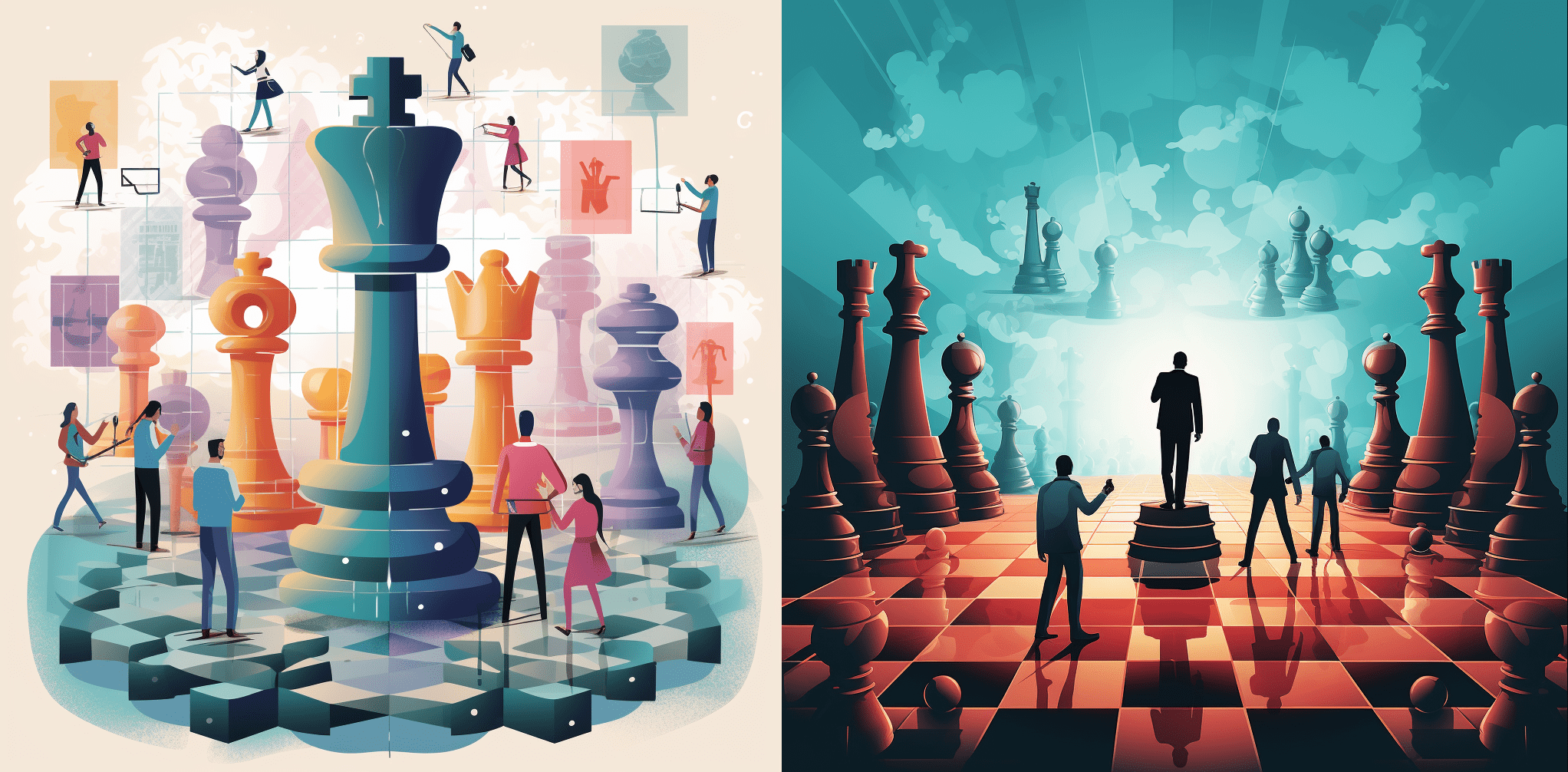When the divided become the played. Imagine sitting in a coffee shop, sipping on a piping hot cappuccino, and you glance over to see a group of chess players deeply engrossed in their games. Suddenly, a mischievous puppet master arrives, whispering into each player’s ear, convincing them that their opponent cheated. And voila, our peaceful café turns into a stormy sea of angry chess enthusiasts.
This, my friends, is a metaphor for the modern-day maelstrom that is social media. The Divisiveness Chess Café, if you will. It’s not the divisions in society that are inherently problematic; it’s those puppet masters, those external influences, that leverage and exacerbate these divisions for their gain.
It’s Not Just Divisiveness, It’s Divide-and-Conquer 2.0
Let’s go a bit deeper, or dare I say, more ‘Freudian’. Humans are hardwired with an emotional quick-response system. That’s great when we are faced with imminent danger—like a grizzly bear eyeing us as its afternoon snack. But, when it comes to evaluating information critically and rationally, our instant emotional responses, especially anger or outrage, can act like a foggy pair of glasses.
If something triggers our anger, it’s like we’ve entered “Fight or Flight” mode. In that state, our ability to discern the reality of a situation can be significantly impaired. It’s hard to check facts when your brain has already lit the emotional bonfire. In the world of neuroscience, this is sometimes referred to as “amygdala hijacking,” and it’s as wild as it sounds.
Social media platforms, intentionally or otherwise, often serve as perfect catalysts for this process. Throw in some algorithmic amplification, and these platforms can supercharge the division, creating echo chambers that often border on the Orwellian.
This Isn’t Your Great-Great-Great-Grandfather’s Propaganda
When the divided become the played. It’s easy to assume that this kind of manipulation is a modern, technology-enabled phenomenon. But, let’s hop into our history time machine for a moment. (It’s a DeLorean. Obviously.)
The method of stoking divisions for personal or political gain has been a staple of human societies since… well, forever. Take Ancient Rome, for instance. The Senate frequently used divide et impera (divide and conquer) strategies to maintain power over the diverse and often contentious Roman population.
Fast forward a bit to the American Civil War. Now there’s an era that was just brimming with divisions. Both sides used emotionally charged propaganda to drum up support for their cause. They knew that when people were angry or outraged, they were far more likely to fall in line without questioning the facts. Sound familiar?
So What Do We Do?
The issue here isn’t the existence of divisions or differences of opinion. Those can be healthy, productive even, and they’re an essential part of any democratic society. The problem arises when these divisions are exploited and magnified to manipulate us.
Here are a few steps we can all take:
- Remember Your Brain Can Be A Drama Queen: Understand that our brains are wired to react emotionally first, and think logically later. We need to slow down, take a deep breath, and then react to provocative content.
- Check Your Facts Before You Wreck Your Peace: Whenever you come across a piece of information that stokes your anger or outrage, take the time to fact-check it. There are plenty of reputable fact-checking sites out there.
- Mix It Up: Deliberately follow or interact with individuals or groups that have different views than you. It can help break down the echo chamber effect.
- Remember History: Remind yourself that the exploitation of divisions is an old trick. You’re smarter than that. You have the tools and knowledge to resist it.
So, the next time you’re in the Divisiveness Chess Café and a puppet master whispers in your ear, remember: It’s your move. Make it a good one.
4 Actionable Social Media Tips
When the divided become the played. Let’s dive into some practical tips that both individuals and companies can implement to avoid playing into divisive tactics on social media:
1. Reflect Before You React: In the world of immediate responses and endless scrolling, it’s tempting to react instantly to posts that trigger strong emotions. Instead, pause and consider the source of the information and its intention. Is it to inform, or to provoke? Reflecting before reacting can prevent us from spreading divisive content unknowingly.
2. Foster Constructive Conversation: Social media platforms can be a fertile ground for meaningful dialogue and learning, but this requires a commitment to nurturing such conversations. Encourage and model respectful discourse. Tread into controversial areas with a focus on learning and understanding, not winning an argument.
3. Promote Fact-Checking: Be a champion for accuracy. Make it a habit to verify the information you encounter on social media, and encourage others to do the same. Don’t be afraid to correct misinformation when you see it. Just remember to do so in a respectful, non-confrontational manner. You’re trying to educate, not instigate.
4. Broaden Your Social Media Horizon: Following only like-minded individuals or companies can lead to an echo chamber, reinforcing our own biases and making us more susceptible to divisive tactics. Make an effort to diversify the voices and perspectives in your feed. This not only enriches your own perspective but also fosters a more inclusive online environment.
When the divided become the played, remember, social media is a tool. Used wisely, it can connect us, inform us, and bring us together. But, it’s up to us to ensure it does not become a source of division and discord.
